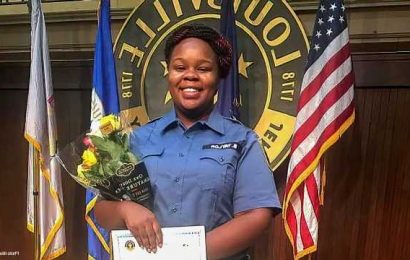Peter Bogdanovich — whose “The Last Picture Show” and “Paper Moon” solidified his reputation as one of the most important filmmakers in the New Hollywood of the ’70s, but whose personal life threatened to overshadow his career behind the camera — has died, Variety has confirmed. He was 82.
The director also had acting roles on such shows as “The Sopranos,” on which he recurred as Dr. Melfi’s psychotherapist; “The Simpsons”; and as a DJ in Quentin Tarantino’s “Kill Bill Volumes 1 and 2.”
Wildly prolific and celebrated early on, then mired in hubris-laced scandal when he became involved with two of his leading ladies — the first for whom he left his wife, the second a Playboy centerfold killed by her husband — Bogdanovich nevertheless remained busy directing, writing and acting through his late years, and emerged, like Martin Scorsese, as a scholarly champion of old-school American moviemakers.
Like his peers of the French New Wave, Bogdanovich parlayed a career in film criticism and scholarship into directing. He was among the first generation of movie nerds-cum-directors who were raised on the language of cinema, a breed that included the younger Spielberg, and later, Quentin Tarantino.
As David Thomson put it in “The New Biographical Dictionary of Film,” “Bogdanovich was a valuable, French-inspired critic who insisted on the director as auteur, so much so that many Americans began to take directors more seriously because of what he wrote.”
Based on Bogdanovich’s movie meditations in Esquire magazine, Roger Corman, who also gave Francis Ford Coppola and Scorsese their breaks in the world of low-budget B pictures, enlisted Bogdanovich to work as his assistant director on the 1966 “Wild Angels.” Under Corman’s aegis, Bogdanovich would graduate to write, direct and produce “Targets” (1968), about a rampaging Vietnam war vet. The experience would prove to be a crash course in filmmaking for the twenty-something novice and pave the way for his breakthrough 1971 feature, “The Last Picture Show,” based on the Larry McMurtry novel.
A coming-of-age ensemble drama set in a bleak small town in Texas, co-written by Bogdanovich and McMurtry and shot in stark black-and-white by veteran cinematographer Robert Surtees, “Picture Show” premiered at the New York Film Festival, where it caused a sensation and prompted Newsweek magazine to declare it “the most impressive work by a young American director since ‘Citizen Kane.’” The comment surely could not have meant more to the son of artistic immigrants, since “Kane” inspired him to be a filmmaker in the first place. (Bogdanovich would attempt in his newfound fame to resurrect Welles’ career, but to no avail.)
“Picture Show” went on to earn eight Academy Award nominations, including best picture and writing and directing nods for Bogdanovich.
The film also provided a springboard for a number of up-and-coming actors, including Jeff Bridges, Ellen Burstyn, Randy Quaid and Cybill Shepherd, the woman for whom Bogdanovich would eventually leave his wife and professional partner, Polly Platt.
As Peter Biskind wrote in “Easy Riders, Raging Bulls: How the Sex-and-Drugs-and-Rock ‘n’ Roll Generation Saved Hollywood,” “[‘The Last Picture Show’] delivered a European frankness that was new to the American screen.”
The film’s commercial and critical success allowed Bogdanovich the opportunity to cherry-pick his next project, a screwball comedy in the vein of “Bringing Up Baby,” directed by one of his heroes, Howard Hawks, that was called “What’s Up, Doc?” (1972).
The film was anchored by two of the biggest stars of the day, Barbra Streisand and Ryan O’Neal. In praising the movie, critic Michael Korda, writing for Glamour magazine, called the filmmaker “both an archivist and an artist,” and that if it “proves anything, it is that Peter Bogdanovich is perhaps the most inventive and original new director to rise from the ashes and ruins of Hollywood’s Gadarene rush into youth-exploitation films.” The film would become the third highest-grossing film of 1972, after “The Godfather” and “The Poseidon Adventure.”
At a time when the director was the most sought-after talent in the New Hollywood, Paramount Pictures sweetened the pot by forming the Director’s Company, giving Bogdanovich, Francis Ford Coppola and William Friedkin the wherewithal to make any project of their choosing as long as it fell within a certain budget range. Although the production entity was short-lived, it granted Bogdanovich the funds for the Depression-era comedy “Paper Moon” (1973), another black-and-white film that re-teamed the director with Ryan O’Neal, playing a confidence man, and earned an Oscar for O’Neal’s daughter, Tatum, who was 9 at the time of filming.
The boy wonder’s hot streak would eventually cool with an ill-fated adaptation of Henry James’ novella “Daisy Miller” (1974), Bogdanovich’s swan song for the Director’s Company that amounted to a vanity project for girlfriend Shepherd. The film received disastrous reviews and signaled the beginning of a downward slide from which Bogdanovich’s reputation could scarcely recover. Two more flops followed, “At Long Last Love” (1975) and “Nickelodeon” (1976) — both vintage Hollywood homages — and finally his filmmaking pace slowed.
The end of the decade would see a shift to the more spartan, character-driven “Saint Jack” (1979) and a brief, if fitful, return to critical acceptance, but he never regained his early swagger, and his relationship with Shepherd had played itself out by 1978.
The romantic comedy “They All Laughed” (1981), a modern-day “La Ronde,” was viewed by optimists as a return to form — another ensemble feature that touted Audrey Hepburn in her last big-screen appearance and newcomers like John Ritter. The movie also marked the mainstream movie debut of Playboy Playmate of the Year Dorothy Stratten, with whom Bogdanovich would have an affair. She was brutally murdered by her husband/manager before the film — distributed by Bogdanovich himself — was released to mixed reviews and limited business.
The episode would serve as a sordid asterisk to the director’s career, made even more so when he wrote a book about it (“The Killing of the Unicorn,” 1984) and eventually married Stratten’s younger sister, Louise, almost 30 years his junior.
In ensuing years, Bogdanovich would enjoy intermittent success. Every critically heralded film like “Mask” (1985) or “Cat’s Meow” (2001) would be matched by a perceived failure, like “Texasville” (1990), a sequel to “The Last Picture Show,” and “Illegally Yours” (1988), a comedy of mistaken identity.
Bogdanovich was born to a Serbian pianist father (Borislav) and an Austrian painter mother (Herma), having both arrived in Kingston, N.Y., from Europe in the year of their son’s birth. In the ’50s, Bogdanovich studied acting under Stella Adler, whose students included Marlon Brando and Robert De Niro.
An avid — some would say obsessive — moviegoer, he programmed films at New York’s Museum of Modern Art in the early ’60s. He moved to Los Angeles with wife Polly Platt in 1968 with the intention of becoming a filmmaker.
The film articles he wrote for Esquire ended up in a book titled “Pieces of Time” (1973). Other books about movies were published in later years, including “This Is Orson Welles” (1992); “Who the Devil Made It: Conversations With…” (1997), which included interviews with Hawks, Hitchcock and George Cukor; and “Who the Hell’s in It: Conversations With Legendary Actors” (2005). In all, he wrote more than a dozen books, while his documentary, “Directed by John Ford” (1971), appeared at the New York Film Festival the same year as “The Last Picture Show.”
Among his last films was “She’s Funny That Way” (2014), starring Jennifer Aniston, Imogen Poots, Owen Wilson and Will Forte, about a Broadway director who falls for a prostitute-turned-actress. It was co-written by his ex, Louis Stratten, whom he divorced in 2001.
Variety called the film “an enthusiastic but low-fizz romantic farce that gets by principally on the charms of a cast speckled with gifted funnymen (and, more particularly, funnywomen).”
Bogdanovich is survived by his two children with Platt, Antonia and Sashy. Platt died in 2011 at age 72.
Subscribe to Variety Newsletters and Email Alerts!
Source: Read Full Article








